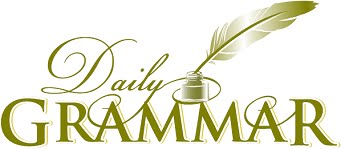View lesson on Daily Grammar - Print Lesson
Adjectives can be used in comparisons which means we change the form of the adjective when speaking of one, two, or more than two. They change either by adding er or est to the adjective or by using the words more or most before the adjective. Some are irregular in their form and must be memorized or looked up in the dictionary. The dictionary gives the forms for most words using er or est to form comparisons. The three degrees of comparison are called (1) positive which states a quality of one thing or person, (2) comparative which compares two things or persons, and (3) superlative which compares more than two things or persons.
Examples:
positive - new, careless, good
comparative - newer, more careless, better
superlative - newest, most careless, best
Adjectives can be used in comparisons which means we change the form of the adjective when speaking of one, two, or more than two. They change either by adding er or est to the adjective or by using the words more or most before the adjective. Some are irregular in their form and must be memorized or looked up in the dictionary. The dictionary gives the forms for most words using er or est to form comparisons. The three degrees of comparison are called (1) positive which states a quality of one thing or person, (2) comparative which compares two things or persons, and (3) superlative which compares more than two things or persons.
Examples:
positive - new, careless, good
comparative - newer, more careless, better
superlative - newest, most careless, best
Instructions: Write the comparative and superlative forms of the following adjectives.
1. jolly
2. honest
3. dim
4. friendly
5. little
--For answers scroll down.
Answers:
1. jolly, jollier, jolliest
2. honest, more honest, most honest
3. dim, dimmer, dimmest
4. friendly, friendlier, friendliest
5. little, littler, littlest - when referring to size uses
less, lesser, least - when referring to amount uses






No comments:
Post a Comment